1,4-naphthoquinone
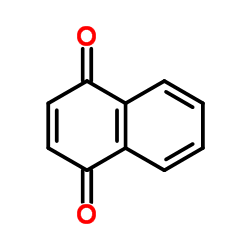
1,4-naphthoquinone structure
|
Common Name | 1,4-naphthoquinone | ||
|---|---|---|---|---|
| CAS Number | 130-15-4 | Molecular Weight | 158.153 | |
| Density | 1.3±0.1 g/cm3 | Boiling Point | 297.9±40.0 °C at 760 mmHg | |
| Molecular Formula | C10H6O2 | Melting Point | 119-122 °C(lit.) | |
| MSDS | Chinese USA | Flash Point | 111.2±24.3 °C | |
| Symbol |



GHS06, GHS08, GHS09 |
Signal Word | Danger | |
Use of 1,4-naphthoquinone1,4-Naphthoquinone is a potential pharmacophore for inhibition of both MAO (monoamine oxidase) and DNA topoisomerase activities, this latter associated with antitumor activity[1]. |
| Name | 1,4-naphthoquinone |
|---|---|
| Synonym | More Synonyms |
| Description | 1,4-Naphthoquinone is a potential pharmacophore for inhibition of both MAO (monoamine oxidase) and DNA topoisomerase activities, this latter associated with antitumor activity[1]. |
|---|---|
| Related Catalog | |
| References |
| Density | 1.3±0.1 g/cm3 |
|---|---|
| Boiling Point | 297.9±40.0 °C at 760 mmHg |
| Melting Point | 119-122 °C(lit.) |
| Molecular Formula | C10H6O2 |
| Molecular Weight | 158.153 |
| Flash Point | 111.2±24.3 °C |
| Exact Mass | 158.036774 |
| PSA | 34.14000 |
| LogP | 1.79 |
| Vapour Pressure | 0.0±0.6 mmHg at 25°C |
| Index of Refraction | 1.617 |
| Stability | Stable. Incompatible with strong reducing agents, strong oxidizing agents. |
| Water Solubility | insoluble |
CHEMICAL IDENTIFICATION
HEALTH HAZARD DATAACUTE TOXICITY DATA
MUTATION DATA
|
| Symbol |



GHS06, GHS08, GHS09 |
|---|---|
| Signal Word | Danger |
| Hazard Statements | H301-H315-H319-H330-H334-H335-H400 |
| Precautionary Statements | P260-P273-P284-P301 + P310-P305 + P351 + P338-P310 |
| Personal Protective Equipment | Eyeshields;Faceshields;full-face particle respirator type N100 (US);Gloves;respirator cartridge type N100 (US);type P1 (EN143) respirator filter;type P3 (EN 143) respirator cartridges |
| Hazard Codes | T+:Verytoxic;N:Dangerous for the environment; |
| Risk Phrases | R25;R26;R36/37/38;R43;R50 |
| Safety Phrases | S26-S36/37-S45-S61-S38-S36/37/39-S28A-S24 |
| RIDADR | UN 2811 6.1/PG 1 |
| WGK Germany | 3 |
| RTECS | QL7175000 |
| Packaging Group | I |
| Hazard Class | 6.1 |
| HS Code | 29146910 |
| Precursor 10 | |
|---|---|
| DownStream 10 | |
| HS Code | 2914690090 |
|---|---|
| Summary | 2914690090 other quinones。Supervision conditions:None。VAT:17.0%。Tax rebate rate:9.0%。MFN tariff:5.5%。General tariff:30.0% |
|
Photosensitizing properties of compounds related to benzophenone.
Acta Derm. Venereol. 93(1) , 30-2, (2013) Benzophenone is a phototoxic compound with absorption maxima in the ultraviolet A (UVA) and ultraviolet B (UVB) range. Many benzophenone derivatives are known to be photosensitizing. On the other hand... |
|
|
Combined experimental and simulation studies suggest a revised mode of action of the anti-Alzheimer disease drug NQ-Trp.
Chemistry 21 , 12657-66, (2015) Inhibition of the aggregation of the monomeric peptide β-amyloid (Aβ) into oligomers is a widely studied therapeutic approach in Alzheimer's disease (AD). Many small molecules have been reported to wo... |
|
|
Posttranslational Regulation of Human DNA Polymerase ι.
J. Biol. Chem. 290 , 27332-44, (2015) Human DNA polymerases (pols) η and ι are Y-family DNA polymerase paralogs that facilitate translesion synthesis past damaged DNA. Both polη and polι can be monoubiquitinated in vivo. Polη has been sho... |
| a-Naphthoquinone |
| 1,4-Naphthalenedione |
| naphthoquinone |
| α-Naphthoquinone |
| Hydronaphthoquinone |
| naphthalene-1,4-dione |
| para-naphthoquinone |
| 1,4-Hydronaphthoquinone |
| 1,4-Naphthoquinone |
| 1,4-naphthalene-dione |
| MFCD00001676 |
| EINECS 204-977-6 |
 CAS#:10075-62-4
CAS#:10075-62-4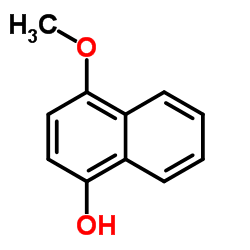 CAS#:84-85-5
CAS#:84-85-5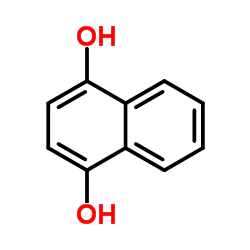 CAS#:571-60-8
CAS#:571-60-8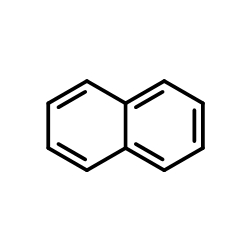 CAS#:91-20-3
CAS#:91-20-3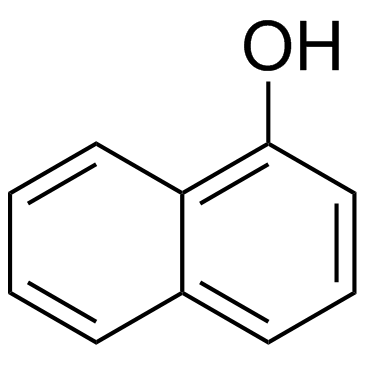 CAS#:90-15-3
CAS#:90-15-3 CAS#:119-64-2
CAS#:119-64-2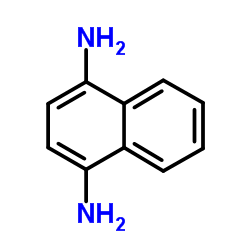 CAS#:2243-61-0
CAS#:2243-61-0 CAS#:57857-70-2
CAS#:57857-70-2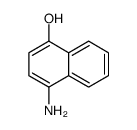 CAS#:2834-90-4
CAS#:2834-90-4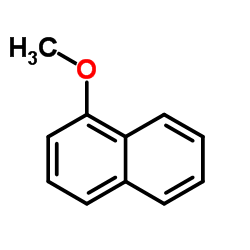 CAS#:2216-69-5
CAS#:2216-69-5 CAS#:10273-60-6
CAS#:10273-60-6 CAS#:55481-88-4
CAS#:55481-88-4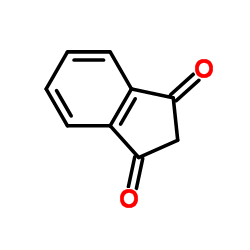 CAS#:606-23-5
CAS#:606-23-5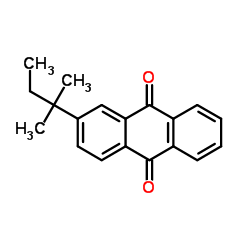 CAS#:32588-54-8
CAS#:32588-54-8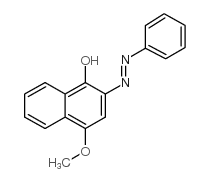 CAS#:59900-33-3
CAS#:59900-33-3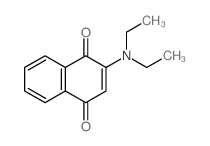 CAS#:14422-78-7
CAS#:14422-78-7![[3-(benzylamino)-2-tert-butyl-4-prop-2-enylnaphthalen-1-yl] carbonate structure](https://image.chemsrc.com/caspic/488/143144-68-7.png) CAS#:143144-68-7
CAS#:143144-68-7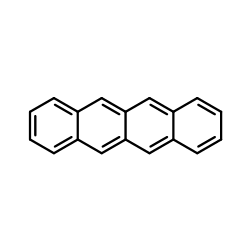 CAS#:92-24-0
CAS#:92-24-0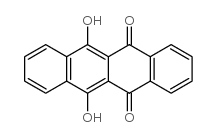 CAS#:1785-52-0
CAS#:1785-52-0 CAS#:92458-44-1
CAS#:92458-44-1
